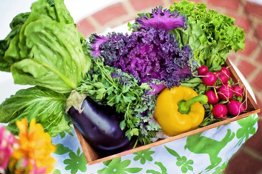The shemitah calendar – basic principles

A concise explanation of the shemitah calendar: on kedushat shevi'it, sefichin, and bi'ur times and types of produce they apply to.
Click here to download the PDF file.
The approximate dates for kedushat shevi'it and sefichin are intended for those buying groceries in the market who do not know their source. From the time a certain type of produce might have kedushat shevi'it, it should be handled as having kedushat shevi'it owing to doubt. From the beginning of the sefichin period, produce from an unknown source should not be purchased until the sefichin period is over (about issues of orlah in the market, see Orlah for the Backyard, Chapters 7 and 9). For produce with a known source, such as the home garden, check the halachot based on the situation at hand.
- Bi'ur times are relevant to anyone who purchases produce with kedushat shevi'it, and to those are stringent about handling produce grown by non-Jews in Israel or heter mechirah produce as having kedushat shevi'it.
- Declare ownerless fruits and vegetables and fruits obligated in bi'ur, based on the date specified in the table.
- If the date passed, declare the produce ownerless immediately when you first realize this is the case.
- Since ripening dates are linked to the solar calendar, most dates appear primarily as their Gregorian dates. Exceptions are the beginning of the sefichin prohibition for vegetables planted right before Rosh Hashanah. For such produce, we consider the period from planting to harvest for each particular vegetable planted before Rosh Hashanah. After this time passes (and we assume each crop was harvested), the sefichin prohibition begins for each crop.
- Also for fruits that begin their formation (chanatah) around Rosh Hashanah time (rare), the Gregorian date is not the defining date. Instead, the Gregorian date depends on when Rosh Hashanah
- For most vegetables, private individuals do not have them at home at the bi'ur time, since the bi'ur time follows the time heter mechirah vegetables are available (when kedushat shevi'it vegetables are no longer available).
- For otzar beit din produce purchased after the bi'ur time, there is no obligation of bi'ur since it was under the auspices of the beit din at the time.
Sefichin in the marketplace
The sefichin prohibition
- The sefichin prohibition applies to vegetables sown or planted during shemitah, whether planted by people or sprouting on their own.
- The sefichin prohibition applies only to the olei Bavel territory and only to vegetables sown or planted annually (not to biannuals, perennials, or plants that grow for several years).
- Crops grown in hothouses, nethouses, or on detached platforms are not subject to the sefichin
- The date the sefichin prohibition begins relates to the time it is possible for sefichin merchandise to reach the market, based on regular planting or sowing times.
- To this end, we consider crops growing in olei Bavel territory in the ground and outdoors.
- Since this is an estimate, and depends on many variables, the dates are beginning, middle, or end of the month, while we round back to an earlier date just in case.
End of the sefichin prohibition
- The end of the sefichin prohibition is defined as the first time crops grown during the eighth year in a permissible fashion can reach the marketplace.
- This time relates to produce grown in Israel only (including olei Mitzrayim territory) and not to imports.
- For vegetables that should arrive at the market around Chanukah time (Kislev-Tevet), the determining date is Chanukah (just as Chazal set the date for such vegetables).
Kedushat shevi'it in the marketplace
The beginning of kedushat shevi'it
- Kedushat shevi'it begins from the time it is possible for vegetables or fruit that have kedushat shevi'it to arrive in the marketplace.
- Since the dates are not exact and extra time is figured in just in case, terumot and ma'aserot should be separated owing to doubt for any produce which might not have kedushat shevi'it.
- For many vegetables, the date for the beginning of kedushat shevi'it is 3 Tishrei, since vegetables harvested from this date on have kedushat shevi'it. Despite this, some vegetables are harvested at later points in the year.
The end of kedushat shevi'it
- The end of kedushat shevi'it is the time when new merchandise is expected to arrive on the market that does not have kedushat shevi'it, and it is no longer expected for merchandise with kedushat shevi'it to be available at the marketplace.
- Since this is an approximate date, separate terumot and ma'aserot owing to doubt, without a blessing, for any merchandise that is not known for certain to have kedushat shevi'it.
- For vegetables, we only look at the end of the sefichin. Only for a small portion of vegetables, specifically those that can be stored for long periods of time (such as many root vegetables), is it possible for there to still be produce with kedushat shevi'it available in the marketplace.
Bi'ur
- The bi'ur time is defined as the time the bi'ur obligation applies to a particular type of produce in one's house. At the date specified on the table, this type of produce should be declared ownerless, as described in chapter 25 of The Consumer's Guide for Shemitah.
- The b'iur time is an estimate of when that crop is certainly no longer growing in the field. To this end, an extra amount of time is figured in just in case.
- The bi'ur time is the same for each particular type of crop (including varieties of the same crop), as stated by the Gemara: "that particular type of crop is no longer available for animals in the field." For example, bell peppers and paprika have the same bi'ur time, following this principle, accounting for the last one available.
- The table does not take into account produce that is not sold commercially, such as kumquats.
- Vegetables or fruits that are available in the field all year long are considered always available, so they are not subject to bi'ur.
- To this end, the fruit or vegetable needs to be available all year in the field in olei Bavel or olei Mitzrayim territory, or even in fields sold through heter mechirah. However, if during some of the year a particular crop is available in the field in the southern Arava (south of Latitude 30, it is considered no longer available and is subject to bi'ur.
- For vegetables, the bi'ur time is the time when a particular vegetable is no longer available from a vegetable that grew from a plant planted before the end of shemitah.
- For fruits, bi'ur applies to the time fruit that began to develop after shemitah is no longer available on trees.
- For grains and legumes, bi'ur applies to crops that reached a third of their growth during the shemitah
Principles governing the calendar
- The dates given are either the beginning, middle, or end of the month.
- The dates are rounded for stringency's sake: at the beginning of the sefichin prohibition and kedushat shevi'it, we use the closest earlier date, while at the end of sefichin and kedushat shevi'it, we follow the later date.
- To determine that a particular crop is not subject to bi'ur since it is available in the field, it must be available in the field all year in the olei Bavel Sede Boker is the southernmost border for this purpose.
- If a particular crop is not available for several months, it will be obligated in bi'ur.
- To end the concern of sefichin available in the marketplace, the first merchandise should arrive from the area north of Latitude 30. Merchandise from imports or other areas are not considered for this purpose.
- The sefichin prohibition ends on Chanukah
- The bi'ur time takes into account extra time so that there is definitely no more of a particular type of produce available in the field, even if this adds a few days.
- Note that there are certain fruits that begin to develop around Tishrei and vegetables that are harvested for the last time around Tishrei. In these cases, the Hebrew date and not the Gregorian date is used.
- The bi'ur time is defined for each type of produce, based on the laws governing kila'im that define different types of species (according to the last fruit/vegetable of a particular species available in the field).
- If a particular type of crop is no longer available in refrigeration (specifically for types of produce that do not have long shelf-lives), there is no need to worry about sefichin, even if there is no new merchandise and imports are available.
We begin to worry about sefichin when the first crops not grown in hothouses, the Arava, or the olei Mitzrayim areas (where the sefichin prohibition does not apply) arrive in the marketplace.




